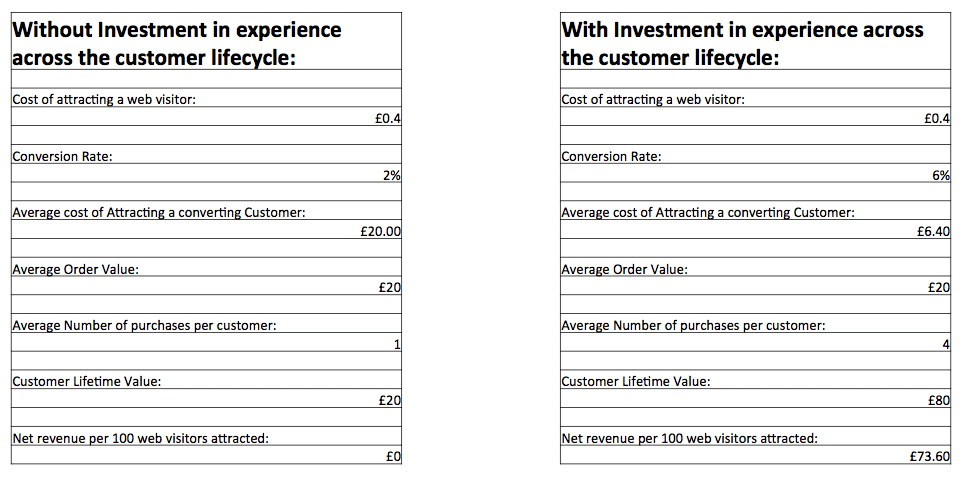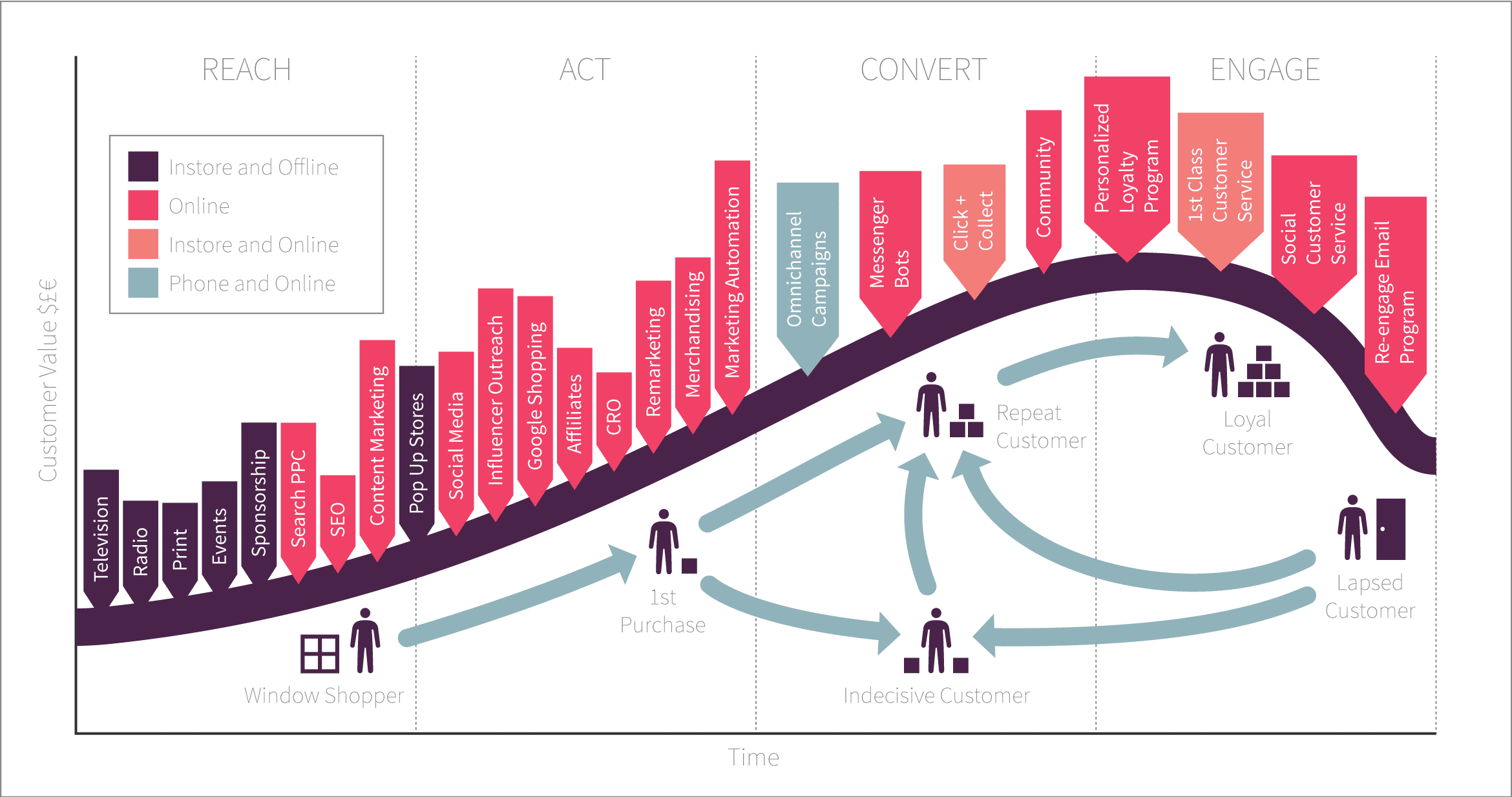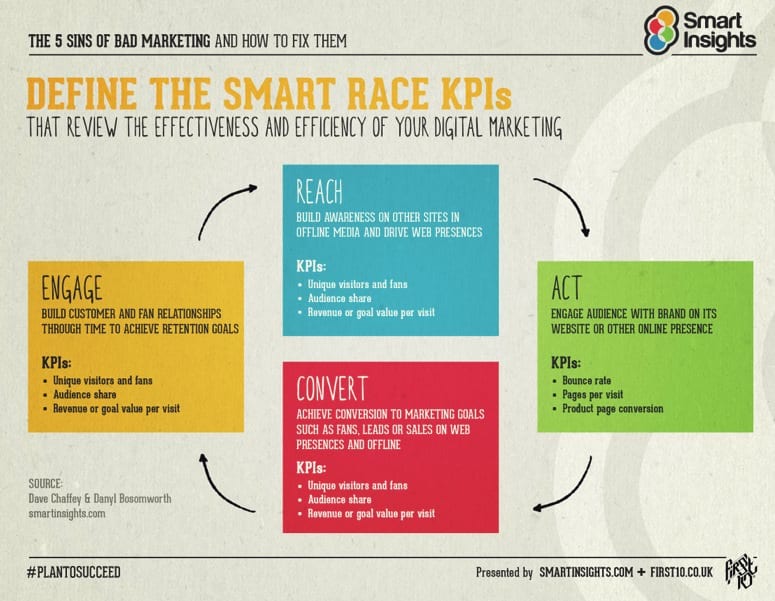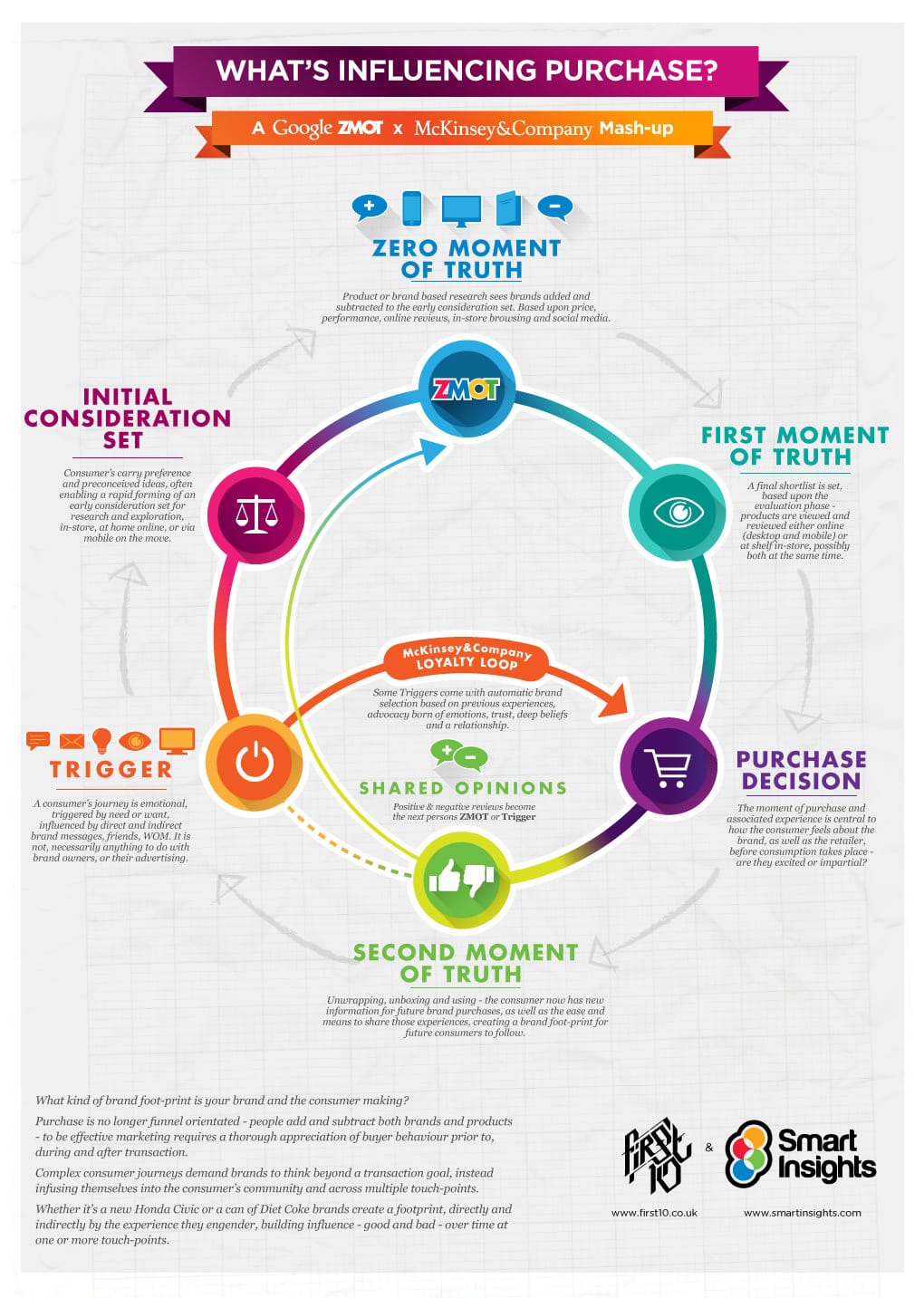Planning and optimising across the whole customer journey is the most effective way to win and retain customers.
Anyone who's worked for an Ecommerce business, or indeed just about any kind of business, will know that customer retention and re-activation is the key to driving consistent growth in profit.
Attracting entirely new customers at the top of the funnel can often become the focus of Ecommerce campaigns because you naturally want to get more and more people into that funnel to convert and thus make you money. But if you have not invested sufficiently in creating an engaging customer lifecycle which converts and re-engages your customers to tempt repeat purchases then attracting new customers will not be the most effective tactic. You should be focusing on improving the customer lifecycle itself.
I'm going to show you why with a nifty little tool I like to call maths.

In this hypothetical scenario, the person who invested in a better experience across the customer lifecycle was rewarded with an increased conversation rate and customers willing to buy from the brand again on several occasions. Though in both scenarios the average order value and the average cost of attracting web visitors is the same, the business which has invested in customer experience across the lifecycle could generate significant profits from attracting customers, whilst the other business cannot generate a profit.
So it's clear that creating an excellent customer experience across the entire journey is of critical importance to a company's bottom line and future growth. But how can this be achieved? We've developed a new chart to plot a customer's journey and their potential value to a business over time, which is relevant to both eCommerce and bricks and mortar retailers. Click on the image itself to see an enlarged version.

The chart maps 25 different marketing, advertising, user experience, and customer support related activities across a given customer's journey, and shows how someone making a first purchase can either become a lapsed customer, or become loyal based on their experience in the latter half of the customer journey- the all important engagement stage. I can almost hear the audible sigh emitted from marketers everywhere at the massive complexity of trying to optimise the entire customer journey, but no one said lifecycle marketing was going to be easy!
It also maps the customer lifecycle across the RACE framework, which helps you break down you plan your activities and structure your KPIs for different departments or teams working to boost varying aspects of the customer lifecycle. The diagram below gives more clarity as to the KPIs you will want to consider and how they are divided into Reach, Act, Convert and Engage.

RACE is extremely useful for developing a successful lifecycle marketing strategy because it deals with the full scope of the customer journey from initial contact with the brand, conversion and finally engagement for repeat business. But RACE is not the be all and end all. Other models are also useful for structuring thinking in relation to the customer journey.
The diagram below was developed by using Google's ZMOT model and McKinsey & Company's customer decision journey- which includes the all important 'loyalty loop'. It helps marketers consider how customers make the all important decision to purchase and how marketers can successfully nudge them into becoming a repeat customer. 
How can marketers use the lifecycle marketing model?
First of all, the lifecycle marketing model we've developed isn't really strictly a 'model', it's more of a useful concept combined with our RACE model to make a kind of hybrid marketing model. We can't lay claim to be the originators of any kind of lifecycle marketing model because plenty of people were using the term 'lifecycle marketing' before we started using that term. However we think by mapping the key activities which need to be considered by marketers across the RACE framework, we've created a useful way for marketers to structure their planning, consider where needs investment, and decide on KPIs.
To get the most out of our lifecycle marketing model, follow these 3 steps:
Step 1- Compile your list of activities
Consider how your organisation is currently using the 25 different activities we've mapped out across the customer journey. Build a list and note down which are being used. Think if there are any opportunities you are missing out on by not using some of the techniques. If there is a technique you feel you certainly should be engaging in, but aren't as of yet, add it to the list. Not all techniques will be relevant to all businesses- for example, if you're an SME E-commerce business, you probably won't need to consider TV advertising. Once you've removed those activities you know you definitely won't be considering (for small businesses this may be many, for larger organisations that combine physical stores and E-commerce, this may be very few or none) then the list will provide the areas you need to focus on.
Step 2- Plan and budget accordingly
You can now use this list to inform how you construct your marketing plan and decide how to assign time/budget to various areas. Utilising the RACE framework, you can see how your budget breaks down by efforts to attract new visitors (reach), interacting with incoming visitors (Act), getting visitors to purchase (Convert) and keeping customers returning so as to facilitate future repeat custom (Engage). Mapping out your plan like this lets you spot and address areas of weakness. It may be that you're focusing too much on getting more customers into a funnel that hasn't received enough investment and thus is very leaky. Or it may be that you've been focusing all your efforts on converting customers, but are failing to attract new prospects.
Step 3- Assign KPIs
The key to actually realising your plan and not have it just be a wishy-washy document that sets out a brilliant vision that is never really implemented is setting useful, actionable and achievable KPIs. For a KPI to be useful and actionable it must be highly specific to the activity being carried out, otherwise it won't give meaning to the person who's job is entirely focused on that area. For example giving email marketers targets around achieving re-activations from customers who haven't purchased in several months makes sense as this to getting customers back into the lifecycle rather than lapsing. But giving email marketers KPIs that are just about engagement in a general sense and are poorly defined will not get the results intended. Use the lifecycle model to generate specific KPIs for teams working across the 25 areas identified, and align these with the overall goals of RACE to develop a successful customer lifecycle which attracts plenty of new customers, but also keeps them engaged and coming back for repeat business.










